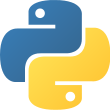 Language
Language
- Python 3
 Reading time
Reading time
- Approximately 57 days
 What you will learn
What you will learn
- Numerical Programming and Data Mining
 Author
Author
- Wes McKinney
 Published
Published
- 2 years, 10 months ago
 Packages you will be introduced to
Packages you will be introduced to
- matplotlib
- numpy
- scipy
- pandas
- statsmodels
- scikit-learn
The author Wes McKinney has the following credentials.
- Python Software Foundation Fellow, a major contributor to the language or its community
- Prominent person behind the widely used Python package pandas
- Prominent person behind the Python package feather
- Prominent person behind Apache Arrow: a cross-language development platform for in-memory data (for more information, see author's Wikipedia page)
- Prominent person behind Apache Parquet: a columnar storage format available to any project in the Hadoop ecosystem (for more information, see author's Wikipedia page)
